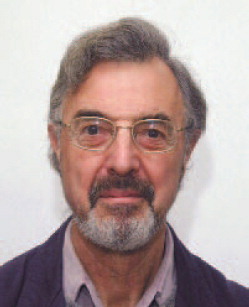Robert O. Owens, a leader in photonuclear physics and a pioneer of the tagged photon technique, passed away on 11 August 2015 at the age of 79. Bob was an “Old School” nuclear physicist who meticulously worried about the minute details of his work and would not publish any research until it was perfect.
Bob was born in Nottingham before studying at Oxford University where he obtained his Doctorate in 1963, based on nuclear research carried out at Oxford and Harwell. After briefly working at Manchester and Aldermaston he took up a postdoctoral position at the Yale 60 MeV electron accelerator laboratory in Connecticut. His photonuclear work at Yale defined the direction of his subsequent career. During his short time in the United States he met June Matthews, working at MIT, with whom he established a working collaboration that led to many research papers, as well as a life-long friendship.
In 1966 Bob returned to the United Kingdom to take up a lectureship at Glasgow University and carry out research at the newly commissioned Kelvin Laboratory 160 MeV electron linac. He led a program of research into the photo-emission of nucleons, studying nucleon momentum distributions and exploring details of the photon interaction mechanism. In 1977 he became director of the Kelvin Laboratory, taking responsibility for its scientific program. In recognition of his expertise Bob served on several UK national committees reviewing the future of the subject.
When the Kelvin Lab linac closed in 1982, Bob led the Glasgow group to join an international collaboration, working with Berthold Schoch, at the new Mainz 100% duty factor electron microtron. Glasgow provided technical expertise, state-of-the-art proton and neutron detectors, and a purpose-built photon tagging spectrometer. When the beam energy was upgraded from 180 MeV to 840 MeV, and later to 1.6 GeV, Glasgow provided new spectrometers, or upgraded existing spectrometers to match the new energies. The collaboration proved highly productive with a steady stream of scientific publications and additional groups joining as time progressed. At first the Glasgow group worked on a series of two-nucleon photoemission experiments that provided a major step forward in understanding nucleon-nucleon correlations. Later the experimental program broadened to encompass meson photoproduction, nucleon resonances, nucleon structure, fundamental sum rules, symmetries, and strangeness photoproduction. Throughout, Bob was a major driving force in the collaboration. Latterly he worked closely with Jürgen Ahrens and played a key role on the Mainz/Bonn international Programme Advisory Committee.
Bob led the Glasgow nuclear physics research group until he officially retired in 2001. However, he remained active long after this time, concentrating on research topics that particularly interested him. His last paper on coherent π0 photoproduction was published in 2014. He also continued to attend regular group seminars till the end of 2014.
Bob is survived by his second wife, Paola, and three sons, Jonathan, David, and Matthew, from his marriage to his first wife, Dorothy.

